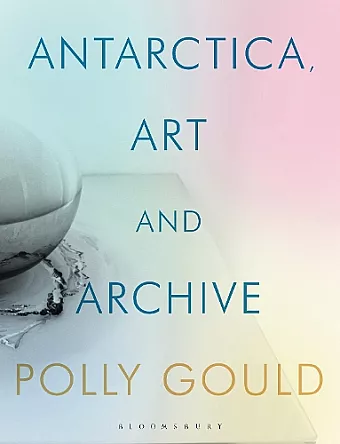Antarctica, Art and Archive
Format:Hardback
Publisher:Bloomsbury Publishing PLC
Published:24th Dec '20
Should be back in stock very soon

An illustrated analysis of the visual, material and anthropological formation of environmental art and histories, in particular a visual history of the Antarctic.
Antarctica, that icy wasteland and extreme environment at the ends of the earth, was - at the beginning of the 20th century - the last frontier of Victorian imperialism, a territory subjected to heroic and sometimes desperate exploration. Now, at the start of the 21st century, Antarctica is the vulnerable landscape behind iconic images of climate change. In this genre-crossing narrative Gould takes us on a journey to the South Pole, through art and archive.
Through the life and tragic death of Edward Wilson, polar explorer, doctor, scientist and artist, and his watercolours, and through the work of a pioneer of modern anthropology and opponent of scientific racism, Franz Boas, Gould exposes the legacies of colonialism and racial and gendered identities of the time. Antarctica, the White Continent, far from being a blank - and white - canvas, is revealed to be full of colour. Gould argues that the medium matters and that the practices of observation in art, anthropology and science determine how we see and what we know. Stories of exploration and open-air watercolour painting, of weather experiments and ethnographic collecting, of evolution and extinction, are interwoven to raise important questions for our times. Revisiting Antarctica through the archive becomes the urgent endeavour to imagine an inhabitable planetary future.
A sublime, essential, and beautifully written addition to one’s library. * Reading Writing Quarterly *
Gould provides a critical review of the archive of Antarctic visual artwork created by Edward Wilson (1872–1912), a celebrated English polar explorer, physician, natural historian, and artist ... Throughout, the author advocates for the value of new and post-anthropocentric materialism in transforming the epistemology of vision. She demonstrates this new approach effectively using Wilsons' archive in understanding how art and polar explorations can be integrated to present a story in which humans are decentered. This book should interest scholars of environmental history and those in polar research fields, as well as scholars of art. * CHOICE *
ISBN: 9781788311694
Dimensions: 248mm x 190mm x 28mm
Weight: 1220g
368 pages